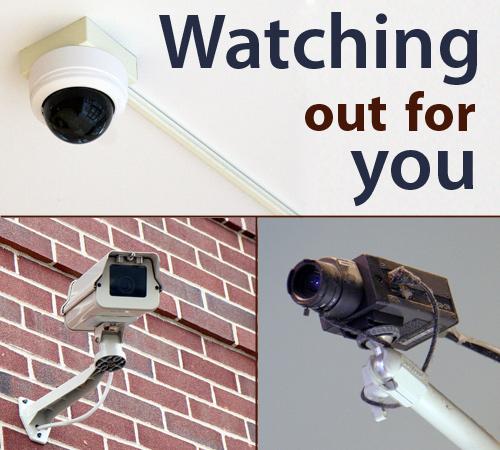Cameras unable to deter all crime

High quality surveillance cameras would help University police identify criminals, but the University lacks funding for this expensive equipment. Photos by Jeremy Berg
Apr 1, 2008
Last updated on May 12, 2016 at 11:29 p.m.
Three months after an attempted sexual assault, the perpetrator has yet to be identified.
Although he was tracked walking through the Illini Union on a security camera, the still shot’s pixilated quality has not aided in his capture.
Although security cameras installed at various campus buildings are useful in deterring crime, Lt. Roy Acree of the University police said, the cameras’ quality and availability still have some notable shortcomings.
“Were you satisfied with the quality of the video?” student trustee Chime Asonye asked the University police. “I was surprised when I saw the quality of the picture. I would assume that there would be a high quality camera in the Union of all places.”
Get The Daily Illini in your inbox!
Despite low-resolution video quality, Acree said the still photo depicting the sexual offender is useful because it invites the public to help identify the suspect.
Acree said an officer tracked a suspect who had similar clothing and dimensions as the person in the video, but it turned out to be the wrong person.
Security cameras that watch for crime at University stadiums, recreation centers and buildings are still being installed.
“(Security cameras) seem to be becoming more prevalent on campus,” Acree said. “The (police department) would like to have more because they are a great tool for us. It’s a deterrent factor of crime.”
The expense, the difficulty of fitting older buildings with security cameras and the lack of a centralized nexus of cameras curb the implementation of quality security cameras.
Acree said a camera with the capability to download video onto a compact disc can cost between $50,000 and $70,000.
“If you have six or seven cameras set up on the Quad, who’s going to pay for this camera system?” Acree said. “It’s no good to have a camera system if no one is monitoring it.”
When it comes to forcing buildings to install security cameras, the police have limited authority.
“It’d be very convenient to sit in my office and spend some time looking around and trying to identify potential suspects,” Acree said.
But only CRCE, a campus crime hotspot, allows police to go back through recorded footage and scan for the criminal following a crime.
“To my knowledge it’s never really been discussed of why different buildings haven’t given us availability (to look through security camera recordings) or if those people even know that it’s a possibility,” Acree said.
Video review has been very effective at stopping crime at CRCE, he added.
“It’s not an eye in the sky kind of thing,” said Greg Burdette, assistant director of information technology. “There’s nobody sitting in the back room watching (live-video monitors).”
Burdette manages security camera systems at the CRCE building, IMPE east wing and the Ice Arena.
He said the CRCE camera system cost $45,000. The price included installation, the security recorder and the multi-flexor, which converts multiple video inputs.
The security camera system stores recordings for 30 days.
The cameras have worked consistently.
“We have a ticket out for repair for two of the cameras, and that’s the first service we’ve had to do to them in two years,” Burdette said. He estimated repairs would cost less than $2,000.
Ed Morford, assistant director for Campus Recreation with risk management responsibilities, said CRCE’s cameras are of a high enough quality to spot thieves.
Cameras are only “one piece of the puzzle” used to deter crime and catch criminals, Morford said.
But no one, including the police, ever monitors live feed.
“There’s not a bank of TVs somewhere in the building where you can sit and watch the different cameras,” Morford said.
Morford is also working to identify locations to be monitored by higher quality security cameras at the new Activities and Recreation Center.
“There are some locations where it would benefit us to have a higher quality picture,” he said, such as the access point and member services desk.
Kent Brown, assistant athletic director, affirmed that Assembly Hall and Memorial Stadium have cameras.
He declined to discuss the number of cameras or quality of picture.
“The security systems that we use we are very comfortable with,” Brown said.
Security cameras can pick out potential “problem areas” in crowds, such as altercations, he added. Security cameras can possibly spot fans who throw something on the field or court.
“We use security cameras as needed,” Brown said. “Do we go over every second of (security camera footage)? No. But if a problem or issue arises, it becomes very useful to have video backup to see what’s going on.”





